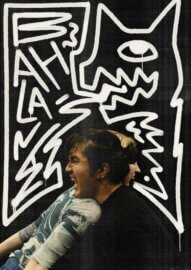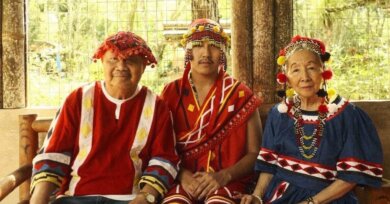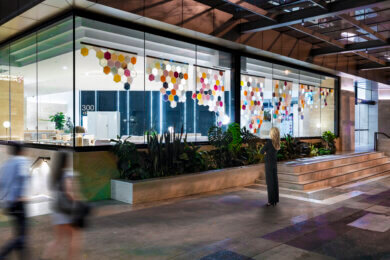“My artwork, Brisbane Koi , is deeply rooted in my family’s story and our enduring connection to Brisbane. This city holds a special place in our hearts as it is where my Japanese grandmother settled, where my mother grew up, and where I now live. The koi fish in my work symbolize the three generations of women in my family—my grandmother, my mother, and myself—representing our lineage.”
Elysha Rei – 300 Queen Street
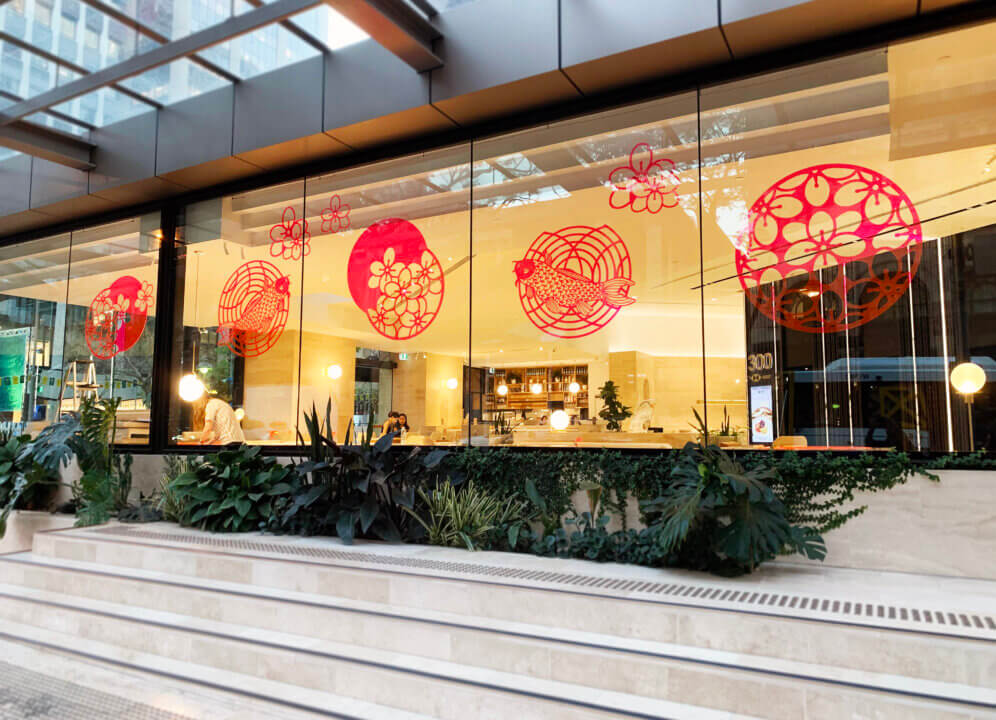
Elysha Rei - Artistic Statement
‘Brisbane Koi’
The koi fish, an invasive species in Queensland, serve as an allegory for the feelings of displacement Rei’s grandmother and mother experienced. Their journey from feeling out of place to finding a sense of belonging is depicted by the koi encircled in rings of water, symbolizing the point where they have found their home.
Incorporation of the Brisbane Lily into her work further enhances this narrative. Celebrated in mythology and various cultures for centuries, lilies symbolize purity, rebirth, and virtue. By using the Brisbane Lily, Rei honors the purity and resilience of her family’s journey and celebrate their sense of belonging in this city.
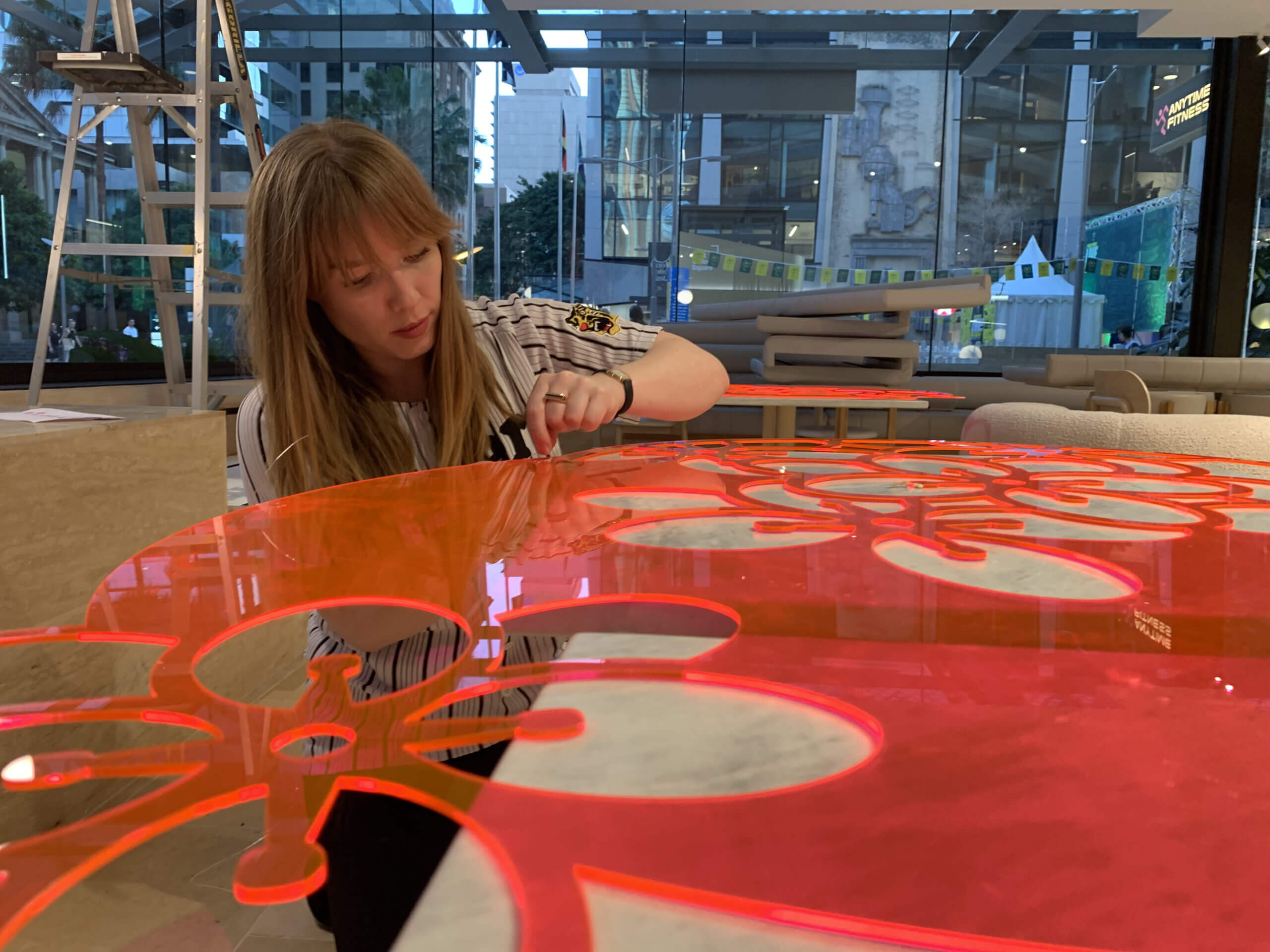
Building: 300 Queen Street
Client: CBRE
CBRE worked with Metro Arts Consulting (MAC) to commission Elysha Rei for a work to feature at 300 Queen Street as part of the placemaking and activation strategy for building tenants.
Lasting for the month of September, the integration of Rei’s work demonstrated the dynamic and layered approach CBRE has taken to delivering a high-quality experience for building tenants.
As part of the activation and placemaking program for the building, CBRE looks to celebrate activities happening on the broader Brisbane calendar. This includes Brisbane Festival – the city’s preeminent cultural Festival held every year throughout September. CBRE collaborated with MAC to deliver a highly visual art installation celebrating both this event and one of Brisbane’s exceptional emerging artists.
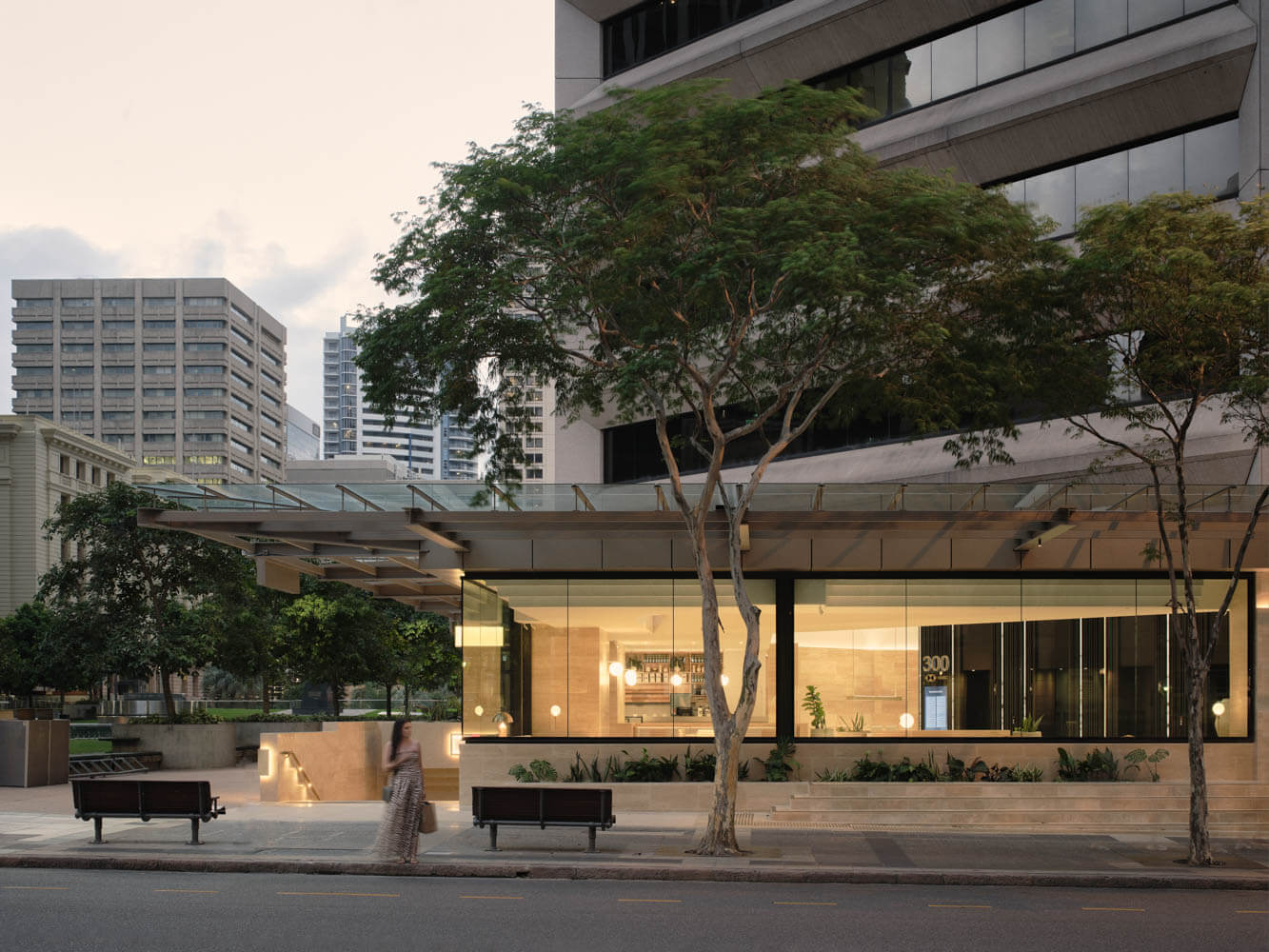
Realising ‘Brisbane Koi’ – The Production Process
Following Rei’s creative process to create the concept and design of Brisbane Koi, the artist then looks to bring this to life via their specific production process.
In order to create a work that can scale up from a computer screen to the windows of a building foyer, Rei must create the design in a vector file, rather than a standard “raster” image file such as JPG or PNG.
Regular “raster” image types rely on set pixels to define a shape, often resulting in jagged images when scaled up, making them unsuitable for laser-cutting. Vector files, however, are built using mathematical formulas to mark locations on a grid, creating an image that can theoretically scale up or down infinitely whilst retaining detail.
Upon uploading this vector file to an industrial acrylic laser-cutter, sheets of transparent orange acrylic are able to be cut down to the exact dimensions required. This process can take multiple hours.
Following the cutting stage, the individual elements are able to be extracted from the complete sheets, still covered by a protective film. Upon removing this film, seen in pictures as the brown paper, one can see the final colour and shape of the produced work, ready for installation.
When Brisbane Koi is exposed to particular lighting conditions, the transparent orange acrylic shifts hues to a vibrant pink, almost glowing in the windows of 300 Queen Street.
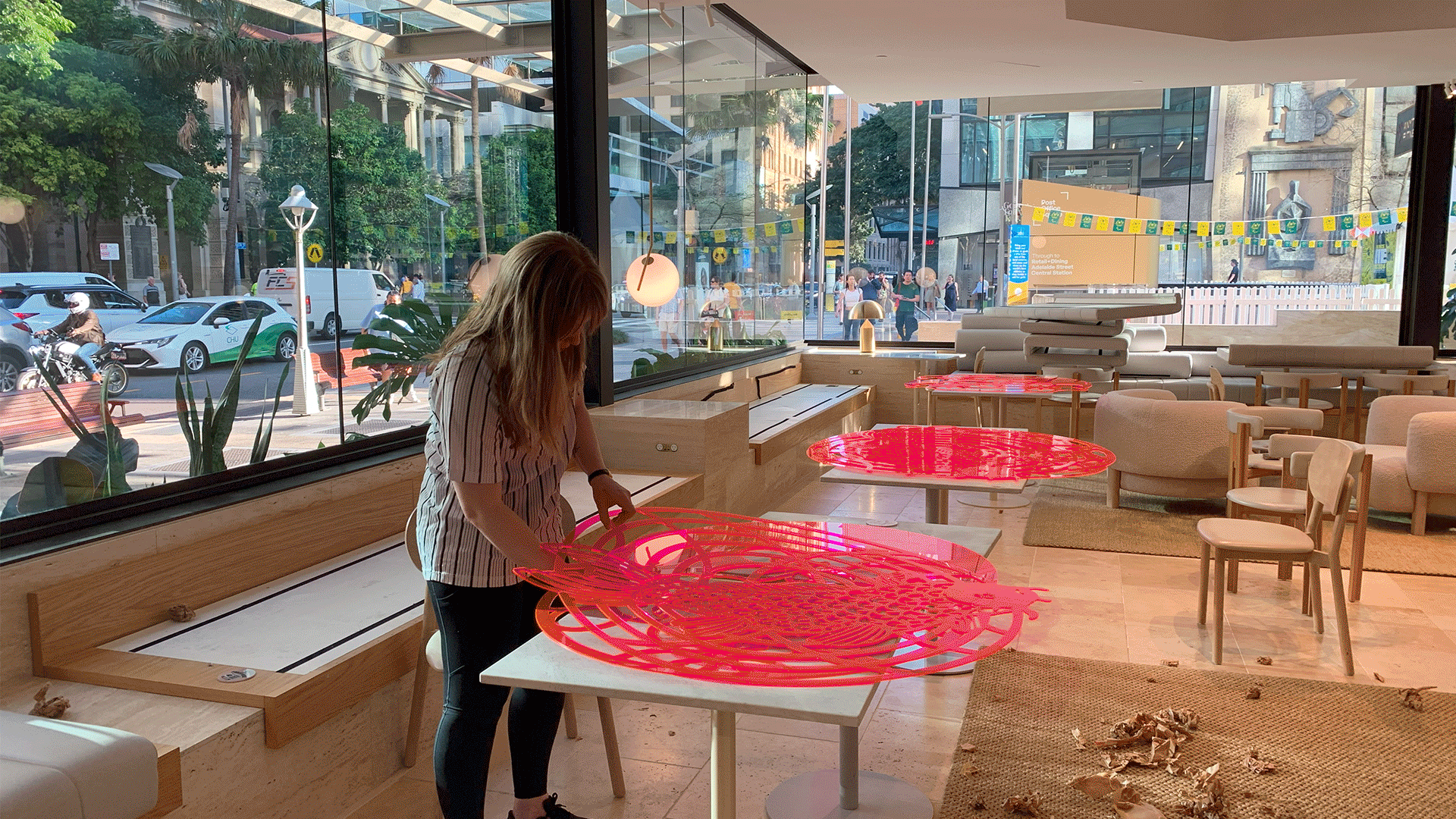
The Artist – Elysha Rei
Elysha Rei (pronounced eh-lee-sha ray) is a Japanese-Australian artist that explores narratives of cultural identity, site-specific history and environmental elements through paper cutting and public art. She predominantly hand-cuts her works out of single sheets of paper, creating site specific installations, and smaller paper cuts, interwoven with references to archival records and historical research.
Rei has a Bachelor of Visual Arts from USQ (2008), a Masters in Business Administration (2018) and is currently undertaking a PhD at QUT exploring how Nikkei Australian identity and history is archived through contemporary paper cutting arts practice. She has exhibited work, curated exhibitions and managed cultural spaces across Australia, Canada, Japan, New Zealand, Germany, Netherlands, Thailand and the US. Rei has been an artist in residence at Past Wrongs Future Choices global research project in Canada (2023), Tiffany & Co (2022), Artspace Mackay (2020), Barcaldine Arts Council (2019) and was the inaugural artist in residence at Museum of Brisbane (2017).
You can view more of Elysha Rei’s work on her website available via the link here: http://www.elysharei.com/
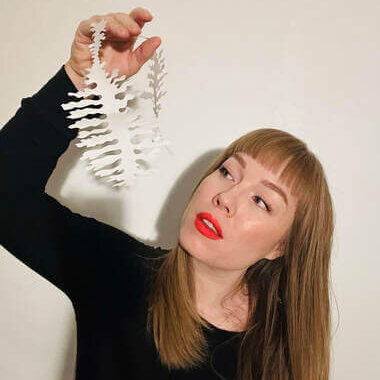
Brisbane Koi will be installed at 300 Queen Street, Brisbane City for the month of September 2024.
If you are interested in activating a space with the assistance of a local Brisbane artist, reach out via the form below and the Metro Arts Consulting team will be in contact.
Make a Metro Arts Public Art Enquiry
